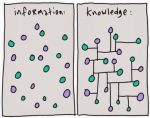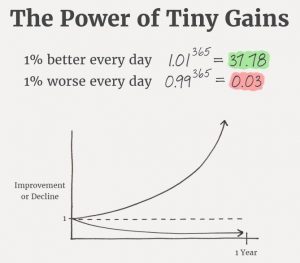Restore: The Bodyweight Strength Program
YOUR KEYS TO SUCCESS
In this section, we’ll attempt to move beyond some of the basic training principles and specific movement guidance presented in the other sections.

There’s a BIG difference between random vs organized information!
Our goal? To discuss some of the more subtle but important elements that will help ensure you get the most from this course.
Because, after all, the devil is in the details, that’s for sure.
BUT…before I discuss and present some specific keys to success, I have TWO videos I want to share with you. Please take the time to watch and listen – the first is only 1:28 long, and the second is LESS than a minute! They’re certainly worth that amount of time!
In this first video, I cover one aspect that is very important for your success with this program.
Please listen in. 🙂
In this next video TIP that I originally created for IG, I tell you one thing that will make a HUGE difference in the ultimate success you experience with this program.
Near the end of the video, I mention “Short Foot.” You’ll find the instructional video for that inside of RESTORE: The Foundation. It’s important for so many reasons, so don’t miss it! 🙂
So, what are the keys to success with this program?
Well, my friend, I have a few to share with you. But…there are TWO in particular that rise above all the rest, that I must share with you right now. Truth be told, these two “keys” might be THE KEY to you getting the benefit you desire from this course. So read carefully – listen closely.
1. This course is called “RESTORE: The Bodyweight Strength Program” for a very good reason – because its focus isn’t just on getting stronger, it is also on moving better and “restoring” authentic strength.
Some people who do this program will bring a higher level of strength, but they may be challenged with movement skills. That means that they can lift some heavy stuff or maybe even have a strength training background, but they may also struggle with low-back pain, joint pain (knee or shoulder or ankle, as an example) or some other movement-related issue.
Other folks may be just the opposite – they may have good basic movement skills and be able to “easily” perform the exercises “correctly,” but they may struggle with overall or specific weaknesses.
These are two different kinds of athletes. Each kind will benefit from the program, BUT ONLY if they recognize where their own individual areas of opportunity (or weak links) are, and then focus on improving in those weaker areas.
Does this make sense to you? I hope so.
If the stronger folks just use this course to keep getting stronger and don’t address movement-related issues, they’re not going to reach their potential and may even end up with a much higher risk of injury. Conversely, someone who moves well fundamentally and continues to focus only on doing these movements “correctly” without progressing them or working hard to build strength, will see only limited results.
We each need to know and recognize our own tendencies, and thus our limitations. After all, the Ancient Greek aphorism “know thyself”, is one of the Delphic maxims and was inscribed in the pronaos of the Temple of Apollo at Delphi according to the Greek writer Pausanias. I think the ancient Greeks knew that this was important. You should too!
There’s another well-known phrase that comes to mind and goes something like this: Keep doing things the same old way and you’ll keep getting the same old results. 😊
2. Above all, focus on learning, especially early on as you get into the course. Before you get on the floor to do an exercise or jump up on the bar.
 Take the time to learn a little bit and then get to work practicing how to move well and get stronger too. As you move through the progressions, come back to this area often to remind yourself about these aspects.
Take the time to learn a little bit and then get to work practicing how to move well and get stronger too. As you move through the progressions, come back to this area often to remind yourself about these aspects.
One thing I’ve learned in over 20 years coaching and guiding athletes is that sometimes we can plant a seed, but it can often take time for that seed to germinate and flower. In other words, you may read something once and it doesn’t quite stick. Coming back to it frequently can make a world of difference.
What are some of the other secrets to success with this course?
-
It won’t be easy and you shouldn’t expect it to be. To get stronger, you MUST push your body beyond what it has done previously, which will be uncomfortable. You’ll need to be committed. It will hurt, but in a good way. Embrace it!
-
Should you be willing to sacrifice form to get a bit more time under load? NEVER. NEVER EVER sacrifice form for additional repetitions. Yes, your goal on these movements is to go until you can NOT complete another repetition – complete temporary muscle failure. But form rules.
-
Recovery: Always allow adequate time for recovery after a truly hard training session. You’ll want to err on the side of caution, in the beginning especially.
-
Nothing about this program is passive – nothing. It is all active and requires full “radiation” and activation of every muscle you can, every moment you can.
-
How demanding will it be? My friend, YOU WILL DECIDE how demanding it will be – you will make it demanding – you will generate your own tension from within! Listen…from the beginning to the end of every single exercise, your goal is to make the exercise as demanding as possible, while maintaining a very low risk of injury. Don’t just do reps – make each moment and every movement count.
-
Recovery: Remember, your body perceives the actual training you do – the workout itself – as a threat. It is stress! And stress – the physical kind – is not only essential to get stronger, it is also one key to living longer and healthier. Our bodies THRIVE on physical stress! We tend to forget to think of things like training from an evolutionary point of view. The point is simply this: Improvements don’t happen IN the workout, they happen after the workout as part of the recovery process. And IF THE training “threat” was great enough, the body WILL respond accordingly by getting stronger.
-
Be relentless and patient: As you go through all of the information that follows, be patient and persistent. Relentless. Watch every video. Read through the written instructions multiple times. Practice relentlessly.
-
Remember, it’s not what you think: Bodyweight training is NOT using your muscles to move the weight of your body. You should think of it as using your body weight to work your muscles harder. Think about it!
-
Your best “teacher”: Our best “teacher” is us and our own experiences. To “get” that experience, we need to first embrace learning, and then do the work. Learn, then get to work. Repeat. It’s simple, but not easy.
-
Smart, consistent, focused. Absolutely nothing beats smart, consistent, focused training combined with a commitment to learn.
-
There is no easy way to get to someplace worth going. Something to remember. Dig in for the long haul my friend!
